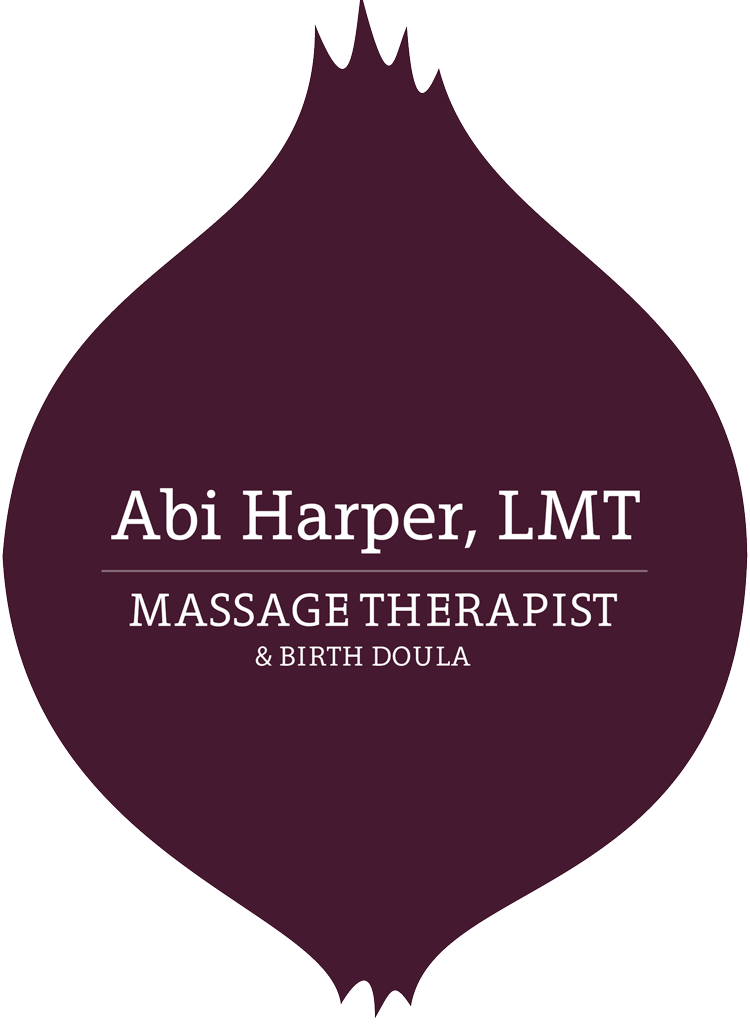What If It's Not Carpal Tunnel Syndrome?
When our hands hurt and we know it's because of work we do with our hands, most of us assume that we have Carpal Tunnel Syndrome, which is defined as pressure on the median nerve as it passes through the wrist, which can cause numbness, tingling, weakness or tissue damage in the hand and fingers. About 50% of cases of CTS eventually require surgery, which takes months to heal, and may or may not successfully treat it. Carpal Tunnel has gotten a lot of press in the past 10 years, and if you have hand pain and spend most of your day typing, most doctors are happy to offer you with this diagnosis and send you on your way with large Ibuprofens, maybe some wrist splints, and the advice to give your hands lots of rest and come back if it gets worse.
There are a lot of points in the muscles around the thumb that can benefit from massage. This is a photo of my actual hands doing massage on a person with actual hand pain!
As a massage therapist who has been practicing for 10 years in Cambridge in an office halfway between Harvard and MIT, most of my clients have presented with hand, wrist, forearm pain from overuse at some point in their treatment, and most of the time, it's what brings them into my office. I am not able to diagnose any conditions, but I have found that when I treat clients who come in with CTS as though they have a completely different problem, their symptoms dramatically improve. The condition I have been treating them for is Thoracic Outlet Syndrome.
There can be a lot of tightness and stickiness in the forearm muscles too.
Thoracic Outlet Syndrome (TOS) has a number of things in common with CTS that makes it complicated to tease out from CTS. In my opinion, the two usually are occuring together by the time someone makes it into my office, frequently with a side order of Tennis Elbow or Golfer's Elbow as well. TOS is also a case of nerves and blood vessels getting compressed by more solid structures, only it happens higher up in this case, in the narrow space near the collarbone and the shoulder as the blood vessels and nerves make their way out the arm. Sometimes this compression is caused by an extra rib, but the same problem can be caused by being in a slumped-forward posture all of the time with the shoulders rounded and the head held forward of the spine. If you are in the extra rib category, there's not much I can do, but I think that more people are in the forward-bent-posture category, and there's a lot that I can do there.
Massage Therapy alone can't change your posture, but I think it makes it a lot easier. What happens over time is that if we spend too much of our time in one position, we actually do sort of freeze that way. Our bodies reset "neutral" posture to the one that we are most accustomed to, even if it is anatomically straining our muscles and putting pressure on our nerves and blood vessels. Have you ever tried to sit up straight and it hurts? This is because the fascia in your body, this single web of tendon that connects everything in us and holds everything in place gets stuck after a while when you spend a lot of time in the same posture. Slow gently stretching massage called Myofascial Release can help it get unstuck, so you can reset your neutral to a place that is easier on your joints and muscles. After a massage where we treat the stuck fascia, clients stand up and move around and they feel less stuck in place, like they have more easy posture options.
Sometimes this same stuck-ness can happen in the hands, wrists or forearms and can cause more localized hand pain that goes away when ease of movement is restored.


